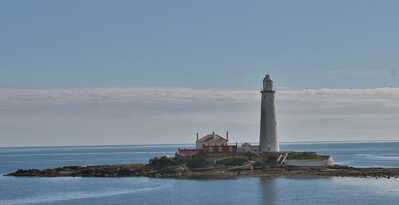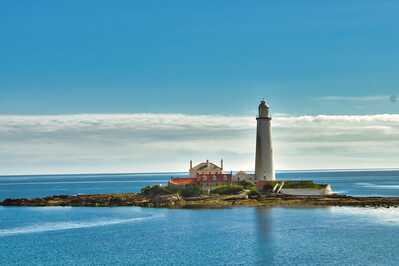@thiru I'm with you on the load. I carry a trekking stick with a quick release head because I dont want the extra load on the trail. It gives me some stability but is not a substitute for a tripod. If you can't carry a tripod then you have to shoot at a shutter speed and f number that leaves you with an iso you can live with. Sometimes there is a compromise to be made. Having software like Lightroom denoise has stretched the acceptable iso a bit.
@thiru I want to suggest that you set your camera to A while taking landscape. Choose f8, set auto-iso and the camera will find a proper shutterspeed. If it is almost dark you should take a tripod with you. If you want to use a certain shutterspeed set the camera to to S and it will find a possible aperture.
That was my learning curve. After that I could use M (it took a couple of years).
https://www.allmondo.com
My question is how can I take the shot to look like what I see with my eyes.
Have I used the correct metering? Have I used the correct focusing? Can I do anything to move the highlight are of the histogram to the right? If I have used low shutter speed, higher aperture or higher ISO I would have lost the details in the bright area.
Original is on the left and the post processed is on the right.
Another two photos of the light house taken from a location closer to the first location with different focusing.
Hm ... you are already on the right way: for the second image (the one closer to the light house), you set a somewhat slower shutter speed (1/400s instead of 1/640) and you can see that the histogram already moved up a bit to the right.
I expect if you had set the shutter speed to 1/200s (at a 38mm focal length this is still plenty fast enough to shoot hand held :)) - or maybe set the aperture to f/8 or f/7.1 or something like that, you would've moved the histogram even more to the right without over exposing. And since you are using the 'blinkies' you would've noticed this before taking the picture so you could dial it back again. Thing to note here is that it is not an issue if you have a few small spots of 'blinkies' here and there; in the raw file this might not be a 100% blown out highlight and you might be able to recover them anyways.
Your question ".. how can I take the shot to look like what I see with my eyes." is a tricky one to answer - our eyes are somewhat better that a camera sensor I guess. In this case, it looks like it was a bright sunny day with the foreground of the lighthouse in the shade? (sunlight coming from the side) Well, then you'd have to lift the shadows anyway - but if you expose for the lighthouse (shadow) you probably going to have to deal with a blown out sky (highlights) - the dynamic range is just a bit too much too handle for the camera :)
Anyway, if you don't want to do a lot of post-processing (multiple exposure blending etc), it's best to find a middle-ground (which you have done reasonably well I think) and finish it in Luminar to get the picture you have in your mind by lifting the shadows and bringing down the highlights a bit. Just make sure you don't end up with a completely flat image - there's nothing wrong to have some deeper shadows and/or a bright sky - some 'local dodge and burning' could do wonders (but that's a whole different topic ;-))
Hope it makes a bit of sense.
@ronaldsmeets Thank you Ronald. Much appreciated.
After a bit more post processing with Luminar Neo.
Thank you all.
One thing I notice is that you may not be using the optimal focusing pattern. For a static shot like this one, I would set it to AFS, and a single focal point.
Needs vary, but my preference here is either AFS for this kind of shot, or 9-point dynamic AFC for action. The fewer points you can get away with in AFC, the less likely focus is to shift to the wrong part of a moving object.
But most of the time I use back button focusing, and leave it on AFC. If you want the greatest control, you can separate functions well by using back button focusing, and assigning AEL to the shutter button half press. For very difficult situations, spot metering can help too. The idea here is that when the back button (AEL/AFL) is pushed, your AF is working as usual, at whatever settings you prefer, but when you let go, it stops focusing, and becomes manual with shutter priority. So now you can get the "focus and recompose" function of AFS by just letting go of the button. By assigning AFL to the shutter button half press, you can now do everything independently. Focus on a point you choose, recompose to establish your metering preference, and then, with shutter button on half-press, recompose and shoot. When you don't need the separation, just hold the back button, aim and shoot. It works both ways. For difficult situations, switching to spot metering gives you even more control once you're used to what the spot meter covers.
Back button focusing takes a little while to get used to, but once it's a habit, it's easy and automatic. I wouldn't start using it in the middle of a trip to Antarctica or the like, but try it around home while you're getting used to the camera, and you may be surprised at how nicely it works.
I prefer aperture priority usually, combined with "Easy ISO." In this mode, the meter chooses a basic exposure, and when I look in the finder I can decide if the shutter speed is OK. If it's not, I can either change the aperture with the front wheel, or the ISO with the rear. For difficult exposures, I push the compensation button and turn the rear wheel. Once in the habit this can be very quick and easy.
One additional thing you should note is that the exposure meter's center point follows the focus center point on Nikons. This may make little difference in Matrix metering, but a lot with spot. If you are using AFS or back button, and focus and recompose, the AF will be held, but the AE will shoot for the current composition. If you want the functions completely independent you must do it on purpose. And if you use the rear control to move the focus center point, the meter will follow. That's a virtue if you are focusing on an object that is lighter or darker than the rest of the picture, but a surprise if you don't expect it.
If you are really dedicated to manual mode, but want some meter control, you might try what many wildlife photographers recommend (dependent on your camera's performance), which is Manual mode with Auto ISO. In this case, you set aperture and shutter speed, and the meter controls ISO alone. You still get exposure comp as needed. To do this best, you need to find out what shutter speeds you can hald hold at with your lens (the 1/30 default is a bit high for VR lenses these days), and what high ISO noise level you are comfortable with on your camera. Set the camera accordingly, and the ISO will now float as the meter demands, but leave your manual settings alone.
e.t.a. If you decide to try back button focusing, check for your particular camera what settings need to be done. On my D7100, just reassigning the focus to the AEL/AFL button does it, but on my wife's D7200, there is another setting needed to disable shutter button focusing, without which your back button decision will be overridden. It's likely the same on a D7500. There will be another setting to assign AEL to the shutter half press, or yet another to assign it to another button.

